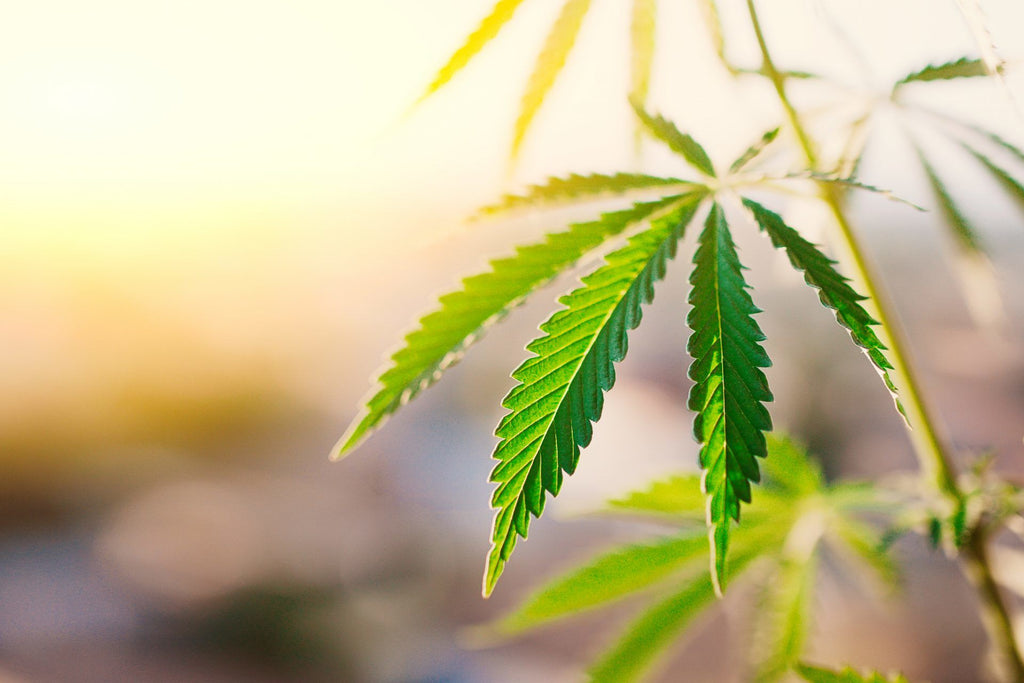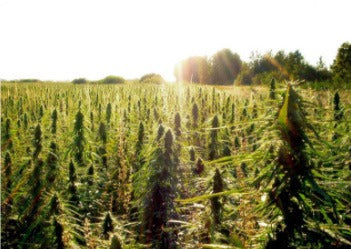CBD vs. CBG: What’s the Difference?

While CBD and THC are the cannabinoids that get the most attention, cannabis actually contains a wide-ranging spectrum of 100+ cannabinoids. Cannabis research has come far in recent years and, as our understanding of cannabis-derived products continues to expand, so does our understanding of the different cannabinoids on that spectrum.
CBG is one cannabinoid that’s increasingly piquing the interest of cannabis researchers and consumers of cannabis-derived products. Like CBD, CBG doesn’t cause psychoactive effects and is said to contain its own potential benefits.
What is CBG? How is it different from CBD?
What Is CBG?
CBG, or cannabigerol, is one of the 100+ cannabinoids found in cannabis. CBG was first discovered in 1964, but research into the cannabinoid is relatively limited. The studies that have been conducted on CBG, however, suggest that it does contain considerable potential benefits.
CBG is derived from cannabigerolic acid (CBGA), which is the chemical foundation for most other cannabinoids. This is why you’ll often hear CBG referred to as the “mother” or “stem cell” of most other cannabinoids.
CBGA is the first cannabinoid acid to form in the cannabis plant, where it is then converted by enzymes into three main cannabinoid acids: cannabidiolic acid (CBDA), tetrahydrocannabinolic acid (THCA), and cannabichromenic acid (CBCA).
In order to become the active cannabinoids like CBD and THC that we’re familiar with, cannabinoid acids must be heated through a process known as decarboxylation. Once CBGA is decarboxylated, it becomes CBG.
The presence of CBG in most cannabis varieties is relatively low (less than 1% by most accounts). Because of the increased interest in CBG, breeders have begun to experiment with crossbreeding and genetic manipulation to produce cannabis plants that contain higher CBG content. Cannabis scientists have also found that the ideal time to extract higher amounts of CBG naturally present in the plant is during the sixth week of an eight-week flowering phase.
CBG and CBD are both cannabinoids that interact with the endocannabinoid system (ECS) and are similar in some ways, but there are also some distinctive differences between them.
Here we’ll take a deeper look.
What’s the Difference Between CBD and CBG?
Different Molecular Structure
CBD and CBG are both cannabinoids, but they do have a different molecular structure. The molecular structure of cannabinoids is represented by the composition and quantity of oxygen, hydrogen, and carbon atoms. Because CBD and CBG have different molecular structures, they interact differently with the ECS.
Different ECS Interaction
CBD is different from other cannabinoids in that it doesn’t directly bind with CB1 or CB2 receptors. Instead, its effects are caused by an indirect influence on the ECS.
CBG, on the other hand, supports ECS function through direct interaction with CB1 and CB2 receptors.
How CBD and CBG Are Similar
While there are some definitive differences between CBD and CBG, the cannabinoids do have a couple things in common.
For one, they’re both known to be non-psychotropic, meaning they won’t cause any intoxicating effects. In fact, most cannabinoids don’t cause intoxication. THC is the primary cannabinoid to cause the “high” that’s long been associated with cannabis consumption.
This being said, both CBD and CBG do influence the ECS and could impact the mind in a way that leads to increased relaxation. Like CBD, CBG could help counter THC’s intoxicating effects. THC creates intoxication by binding to CB1 receptors in the brain.
CBG has a slight affinity for CB1 receptors that is approximately equal to CBD. This is why it’s suggested that CBG could counteract intoxication experienced when consuming THC.
What Are the Potential Benefits of CBG?
If you’ve been using CBD for a while, you’re probably aware of the bounty of benefits it’s said to bring. Maybe you’ve personally found it helps support your sleep schedule, your bestie hasn’t stopped raving about how much calmer she feels since she started taking CBD, or your fitness friend swears by a CBD topical to support sore muscles and joints.
Like CBD and other cannabinoids, CBG is suggested to contain some benefits itself. While research on CBG is still pretty limited, some believe that CBG contains promising potential.
As the ECS performs its duty of keeping the body balanced, CBG can support it in running optimally. Anyone looking to give their body’s inflammatory response extra support may turn to cannabinoids like CBG.
Skin can be tricky to care for, especially during dry months. Those using CBG to support their body’s natural defenses may also find that it helps them maintain healthy skin.
CBD vs. CBG: Final Thoughts
The potential of CBG has recently gained some serious attention, with both scientists and cannabis consumers alike taking notice of the up-and-coming cannabinoid. Not only is CBG the precursor to all other cannabinoids, but it’s also suggested to contain a list of benefits that are a bit different than CBD.
When it comes down to CBD vs. CBG, there are absolutely definitive differences, but there are also some similarities. Like other cannabinoids, they work harmoniously with the ECS to provide their prospective benefits. Both CBD and CBG are non-intoxicating, meaning they won’t make you feel high.
As you can see, both CBD and CBG contain their own unique potential, offering a variety of prospective benefits that could support wellbeing. Both full spectrum and broad spectrum CBD products will contain trace amounts of CBG. There are also brands that offer CBD + CBG products for those who want to take full advantage of the cannabinoid that’s making waves throughout the cannabis community.
If you’re thinking about trying CBG for yourself, just make sure the product you’re interested in comes with third-party lab test results that ensure you’re getting a safe product that contains as much CBG as the label claims.
Keep in mind that as promising as the benefits for CBG might seem, research is still very limited. If the increased research over recent years into the benefits of CBD is any indication of what’s to come with other cannabinoids, we imagine the future holds some serious promise for this cannabinoid mother.

Newsletter signup
Join the Joy Organics Family
Sign up and get updates on new products, as well as special coupons and discounts.
testimonials
What Our Clients Say
“This is a company that truly cares about its customers and providing the best CBD products currently available on the market.”









Join In On The Conversation
Your email address will not be published. Required fields are marked *
Comments will be approved before showing up.